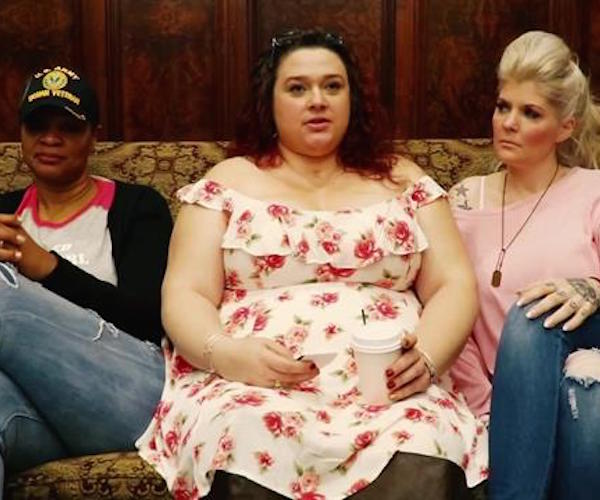Film Review: “Served Like a Girl” — A Unique Look at Women in Combat
Served Like a Girl offers an intense and gratifying look at the first wave of American women in combat.

A scene from “Served Like a Girl.”
By Paul Dervis
One of the treats of hanging out in New York at the end of the summer is that there are so many options for finding entertainment and illumination … and Served Like A Girl checks off both lists. This compelling new documentary, soon to be available on Video on Demand, is the brainchild of director Lysa Heslov, who, with Tchavdar Georgiev, scripted the movie. Heslov, who acted two decades ago under the name of Lysa Hayland, is a first time director. She makes some rookie mistakes, but those are forgivable in a film that offers an intense and gratifying look at the first wave of American women in combat.
The film is listed as a documentary, but it owes a lot to the “Reality TV” genre. On a superficial level, the storyline follows five contestants as they vie for the Ms. Veteran America Contest, a fundraiser whose purpose is to help homeless women veterans (the fastest growing group of homeless in the United States today). But, in reality, Served Like a Girl is an in-depth look at what female soldiers are going through in Iraq and Afghanistan. Suffice it to say, the picture is more horrifying than it is pretty.
One of the women had her legs blown off as she and her mates were travelling in an armoured jeep … and she was the lucky one. All the others perished, leaving her to deal with formidable survivor guilt while she struggles to return her life to a semblance of normalcy. In a bittersweet moment, she talks about her dreams that, one day, she will be able to wear fancy designer shoes. Her prosthetics do not allow for such luxuries.
Another woman recalls being raped by a subordinate. Although she outranked him, she feared reporting the crime. She assumed that she would not be believed; or, worse yet, her violation would be proof that women do not belong in combat. It is a debilitating trauma that she will never get over.
A third woman talks about her desire to work as a mechanic. Before she enlisted it was a dream that her father, a mechanic himself, laughed at. She was given that opportunity in the army, and took full advantage of it.
But the spotlight, if you could say there was one in the film, is on Rachel, a petite dancer, a cheerleader for the Washington Redskins, and a medic who served in Iraq. In one memorable scene she remembers what it was like trying to save the life of a friend, a soldier who had lost all his limbs and was bleeding to death. The primal helplessness of her desperation taps into our deepest fears. The devastation of that night is captured starkly in her voice, even more so on her face.
One of the organizers of the contest was Jas Boothe, a soldier who returned to America and became homeless and was then diagnosed with cancer. She found that the government treated returning women vastly different than men. She lived on the streets because she was told that, although aid was available to the male veterans, similar programs had not been set up for females. A powerful and resilient woman, Jas pulled herself out of the abyss; she is now dedicated to helping countless other destitute women.
Despite the strengths of its revelations, there are shortcomings in Served Like a Girl. It has difficulty focusing on its major characters at the outset, though that issue is fairly quickly rectified. The women’s tales of combat, which begin about a half hour into the movie, reveal their personalities, unforgettably.
Not so easily fixed is the filmmaker’s decision to start off the film with much too much about the contest itself. Instead, Heslov should have given us some background about the lives of the female veterans. Who cares about the rules and history of the competition? The motivation behind the contest is noble, but the event itself, as might be predicted, is a bit garish…it is, in fact, staged in Las Vegas. What’s more, there is something a little unseemly about these brave woman, all of whom are part of a hardbitten sorority of sorts, competing against each other. In the end, we watch two of them, who we have seen struggling with their sense of self worth, fight off disappointment when their names are not called … it is as if, yet again, they are being told that they are not worthy.
And nothing could be farther from the truth. Watching the closing credits roll, one gets the sense that what we have watched is evidence of a vital step in America’s cultural revolution, a significant turn in our understanding of gender.
Paul Dervis has been teaching drama in Canada at Algonquin College as well as the theatre conservatory Ottawa School of Speech & Drama for the past 15 years.
Tagged: Iraqi War, Lysa Heslov, Paul Dervis, documentary, female veterans
